How to Create a CRUD App with jQuery?
This guide will walk you through building a complete CRUD (create, read, update, delete) application using jQuery.
We'll use Back4app as our backend service to simplify data management. In this tutorial, you'll explore how to configure a Back4app project, design a flexible schema, and implement CRUD functionalities with jQuery through REST API calls.
We begin by setting up a Back4app project titled Basic-CRUD-App-jQuery. This project provides a scalable non-relational data storage solution. You’ll define your data model by creating classes and fields directly within Back4app, either manually or with the help of Back4app’s AI Agent.
After that, you'll learn to manage your data using the Back4app Admin App—a user-friendly, drag and drop interface.
Finally, you'll connect your jQuery-powered front-end to Back4app via REST API calls, ensuring that secure access is maintained.
By the end of this tutorial, you'll have a production-ready jQuery application that can perform basic CRUD operations along with secure user authentication and data management.
- Build a jQuery-based CRUD application using a robust low-code backend.
- Understand how to design a scalable backend and integrate it with your jQuery front-end.
- Learn to use the intuitive Back4app Admin App for efficient data manipulation.
- Discover deployment strategies including containerization to smoothly launch your application.
Before diving in, make sure you have:
- A working web development environment. Use a code editor like VSCode, Sublime Text, or similar, and ensure you have modern browsers for testing.
- Basic knowledge of jQuery, JavaScript, and REST APIs. For a refresher, check out the jQuery documentation.
- Log into your Back4app account.
- Click the “New App” button on your dashboard.
- Name your project: Basic-CRUD-App-jQuery and follow the on-screen instructions to complete the setup.
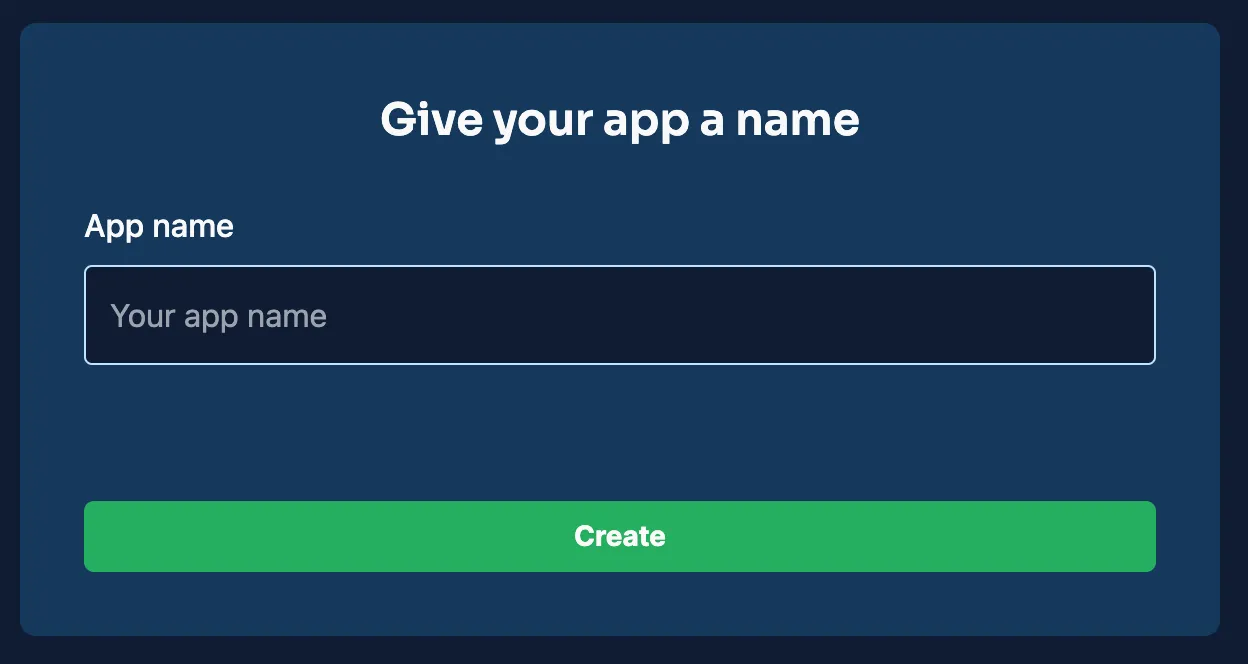
After creation, your project will appear on the dashboard, laying the foundation for your backend configuration.
For this CRUD application, you will create several classes (collections) in Back4app. Below are the primary classes and their fields essential for CRUD operations.
This class stores information about each item.
Field | Data Type | Description |
|---|---|---|
_id | ObjectId | Auto-generated unique identifier. |
title | String | The name of the item. |
description | String | A brief description of the item. |
createdAt | Date | Timestamp of when the item was added. |
updatedAt | Date | Timestamp of the last modification. |
This class handles user credentials and authentication details.
Field | Data Type | Description |
|---|---|---|
_id | ObjectId | Auto-generated unique identifier. |
username | String | Unique identifier for the user. |
String | User’s email address. | |
passwordHash | String | Encrypted password for secure login. |
createdAt | Date | Account creation timestamp. |
updatedAt | Date | Timestamp for the last account update. |
You can manually add these classes and fields via the Back4app dashboard.
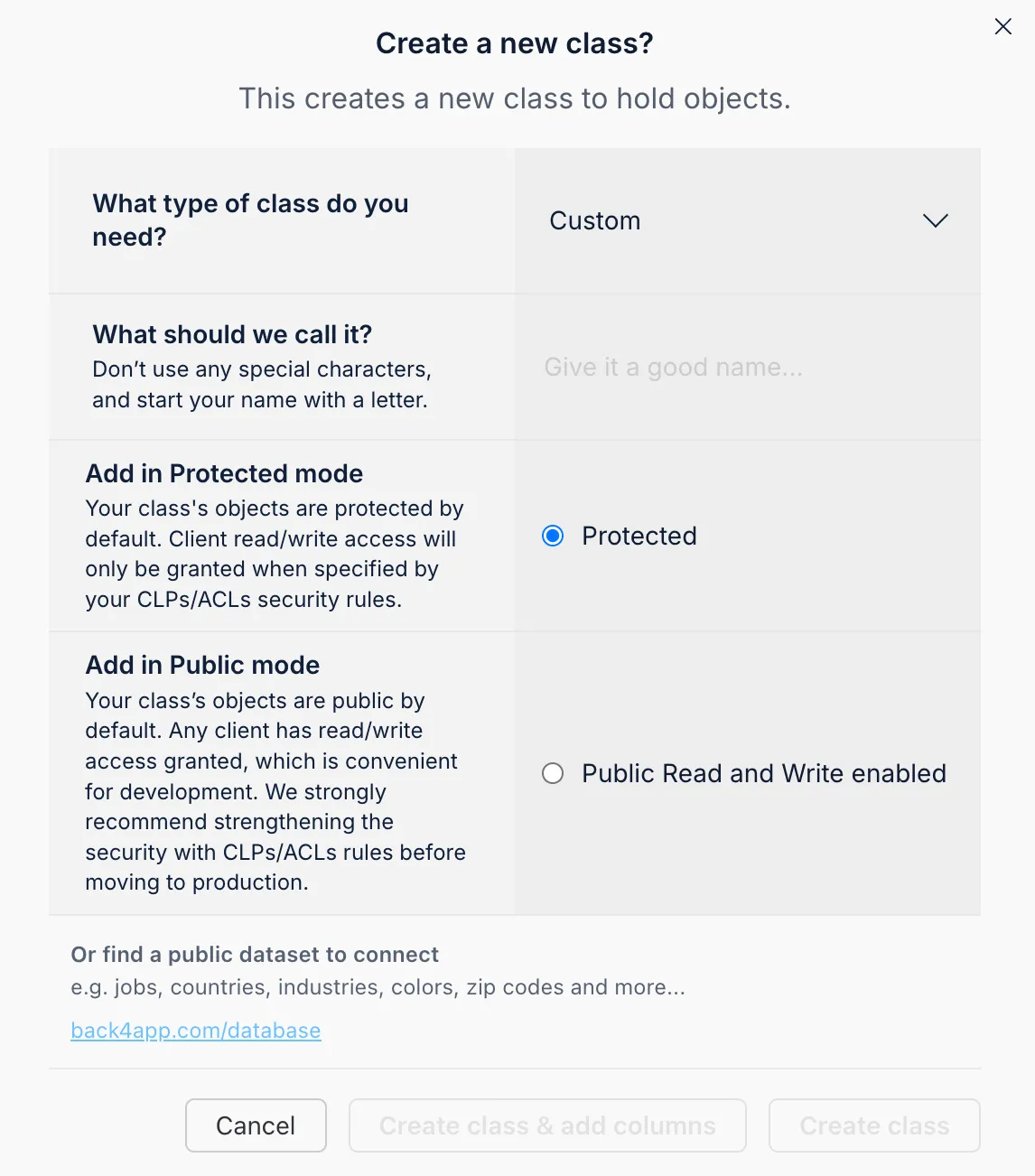
To add fields, select the data type, enter the field name, set a default value if necessary, and mark it as required if needed.
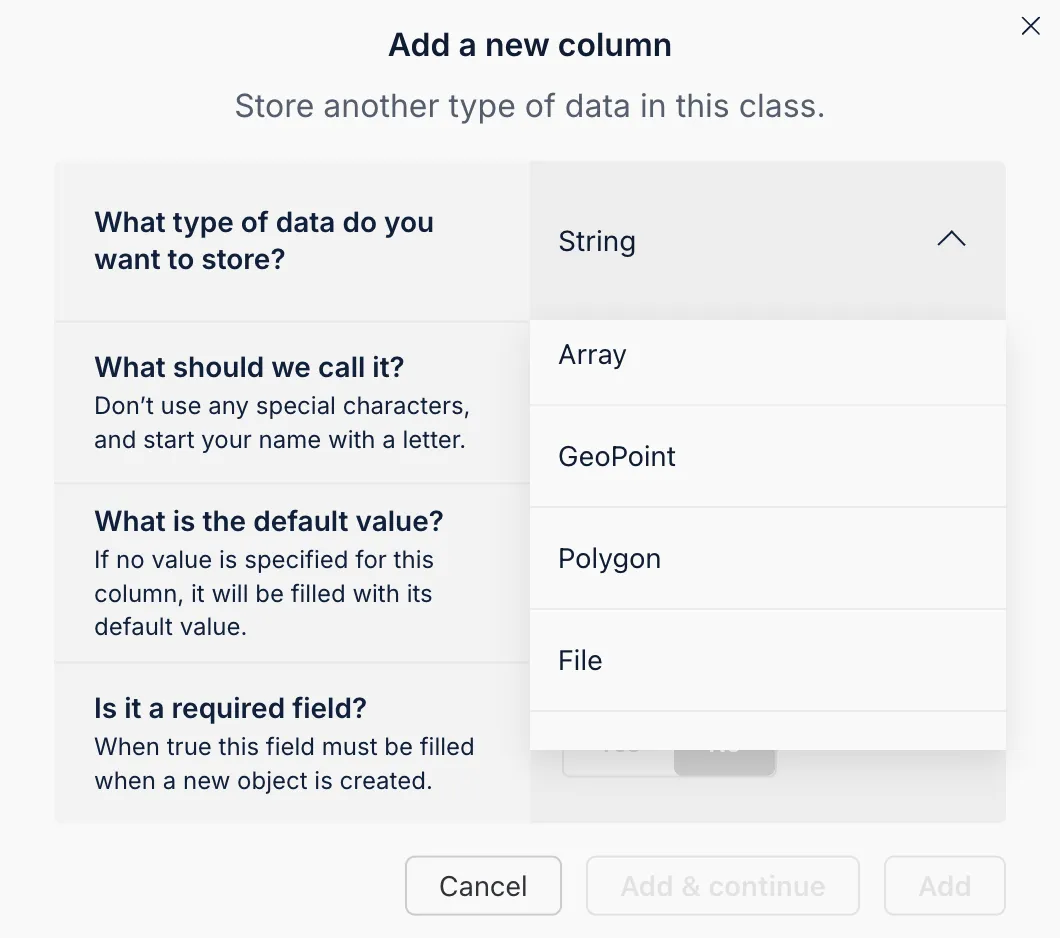
The integrated Back4app AI Agent can automatically generate your schema based on a brief description. This simplifies project initialization and ensures your model supports CRUD operations.
- Open the AI Agent: Sign into your Back4app dashboard and navigate to the AI Agent section under project settings.
- Describe Your Schema: Provide detailed information about the classes and fields required.
- Review and Confirm: Once the AI Agent processes your input, it will suggest a schema. Review and approve it to finalize your configuration.
This AI-assisted process not only saves time but also ensures a consistent and optimized data schema.
The Back4app Admin App offers a no-code solution for efficient backend data management. Its intuitive drag-and-drop interface simplifies the process of performing CRUD operations such as adding, viewing, editing, and deleting records.
- Go to the “More” menu on your Back4app dashboard.
- Select “Admin App” and click on “Enable Admin App.”
- Set up your admin credentials by creating an initial admin account, which will also establish roles (like B4aAdminUser) and system classes.
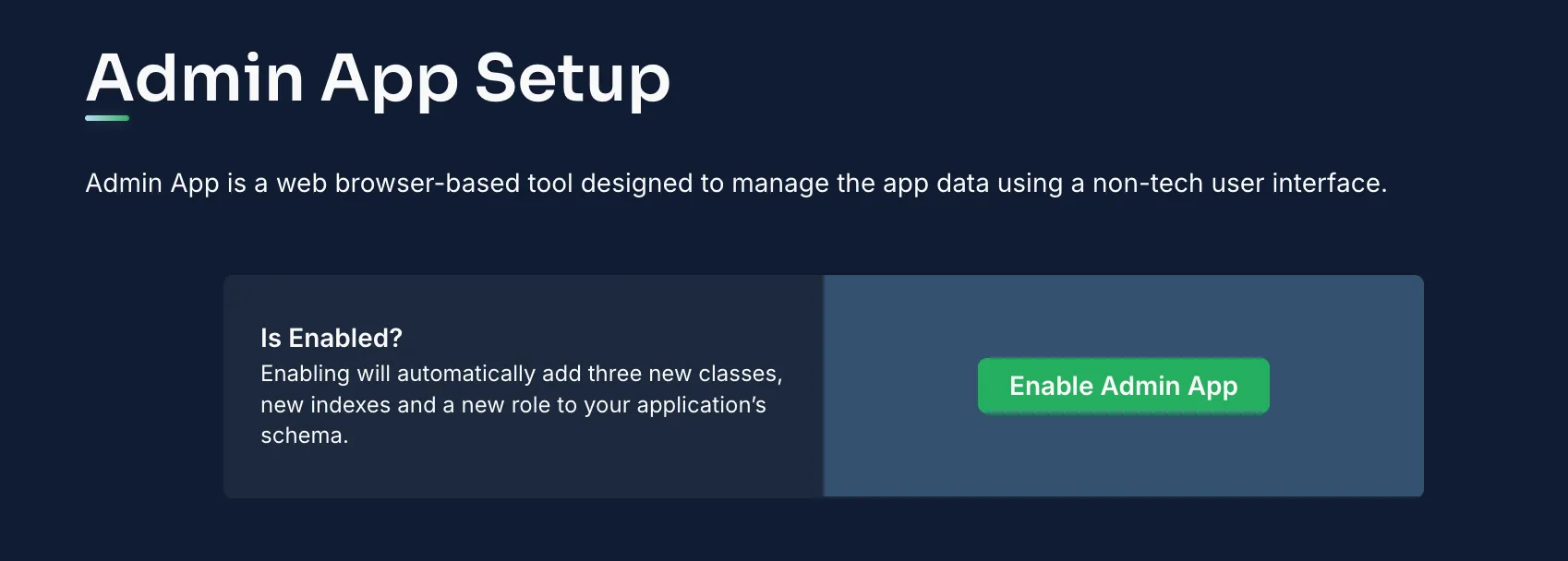
Once activated, log in to the Admin App to manage your application data.
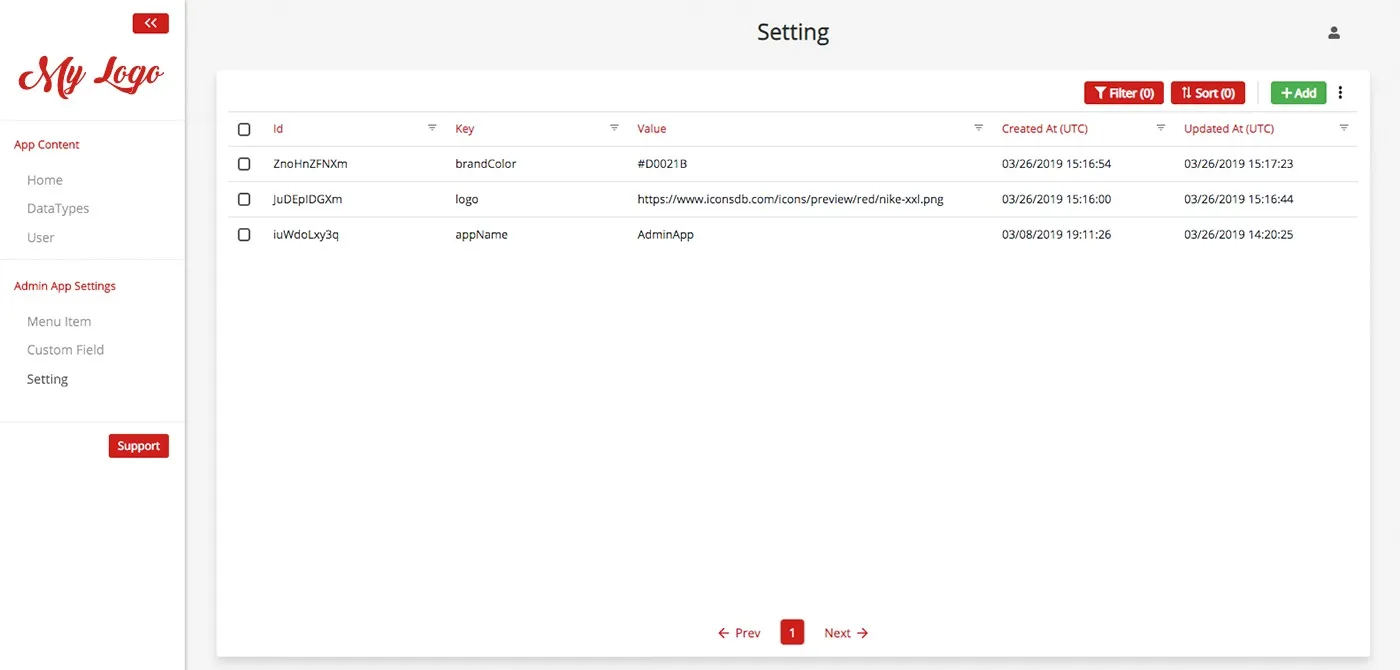
Within the Admin App, you can:
- Insert Records: Click “Add Record” within a class (e.g., Items) to add new data.
- View and Edit Records: Select a record to review its details or modify its fields.
- Delete Records: Remove entries that are no longer needed.
This streamlined tool simplifies data management, allowing you to focus on your front-end logic.
Now that your backend is configured, it’s time to connect your jQuery-based application to Back4app.
Instead of using a Parse SDK, you will make direct REST API calls using jQuery's AJAX methods. Below are examples of how to perform CRUD operations.
Integrate these AJAX calls into your jQuery scripts as needed to manage CRUD operations in your application.
Protect your data by setting up ACLs for your objects. For example, to create an item that only the owner can read and write:
Use the Back4app dashboard to configure CLPs, ensuring that only authenticated users have access to sensitive classes.
Back4app uses the built-in User class for handling authentication. In your jQuery app, you can manage user sign-ups and logins with REST API calls.
You can expand on these methods to manage sessions, password resets, and other authentication features.
Back4app offers an easy deployment process. You can deploy your jQuery application using various approaches, including static site hosting or containerization.
- Build and Minify: Use tools like webpack or gulp to bundle and minify your jQuery scripts.
- Verify Assets: Ensure that all your HTML, CSS, and JavaScript files are correctly compiled.
A typical project layout might look like this:
- Upload your project files to a static hosting provider such as GitHub Pages, Netlify, or Vercel.
If you prefer containerization, include a Dockerfile in your project root:
After setting up your Docker environment, link your GitHub repository in the Back4app dashboard under the Web Deployment section, configure build commands if necessary, and deploy your application.
Congratulations! You have successfully built a jQuery-based CRUD application integrated with Back4app.
In this tutorial, you set up a project named Basic-CRUD-App-jQuery, defined your data schema for Items and Users, and managed your data through the Back4app Admin App.
Additionally, you connected your jQuery front-end via REST API calls and implemented essential security measures.
Next Steps:
- Expand the Application: Add features like advanced filtering, detailed views, or live updates.
- Enhance Backend Capabilities: Explore cloud functions, integrate third-party APIs, or implement role-based access.
- Further Your Skills: Dive into the Back4app documentation and explore additional tutorials for more advanced functionalities.
Happy coding and best of luck with your jQuery CRUD application!
